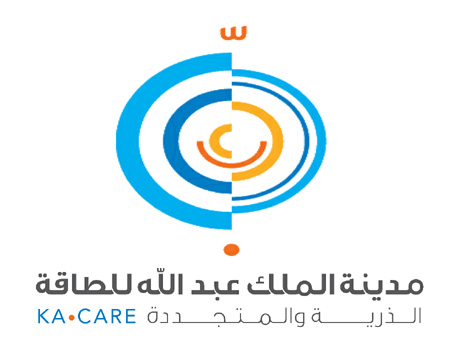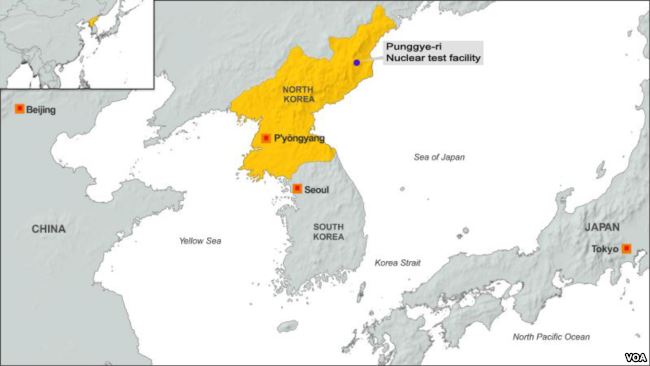
Blog
-
Geiger Readings for Nov 03, 2017
Ambient office = 118 nanosieverts per hourAmbient outside = 127 nanosieverts per hourSoil exposed to rain water = 130 nanosieverts per hourCelery from Central Market = 177 nanosieverts per hourTap water = 95 nanosieverts per hourFilter water = 87 nanosieverts per hour -
Nuclear Weapons 321 – India Adds Fastest Cruise Missile In The World To Their Nuclear Arsenal
India has approximately a hundred nuclear warheads and a triad of delivery systems. These weapons are intended for defense against two possible aggressors, China and Pakistan, both of which also have nuclear weapons. Recently, India began receiving fighter jets that will be able to fire nuclear cruise missiles.
There have been reports in the media that India’s Strategic Forces Command (SFC) begun taking delivery of 42 Su-30 MKI air dominance fighters modified to be able to be equipped with air-launch BrahMos supersonic cruise missiles. It is believed that this will be an important addition to the striking power of the air branch of India’s nuclear triad.
Russia and India Report said, “Individually, the Su-30 and BrahMos are powerful weapons, ”Russia and India Report noted. “But when the world’s most capable fourth generation fighter is armed with a uniquely destructive cruise missile, together they are a dramatic force multiplier.”
The Su-30 MKI is built by Russia’s Sukoi Design Bureau and licensed to India’s Hindustan Aeronautics Limited. The two seat, highly maneuverable, fourth-generation multirole combat fighter aircraft will be the backbone of the Indian Air Force through 2020. The Indian Air Force has two hundred jet fighters and plans to obtain eighty two more.
India’s Defense Research and Development Organization (DRDO) and Russia’s NPO Mashinostroeyenia collaborated on the development of the Brahmos cruise missile. The Brahmos missile can travel at speeds of up to two thousand and three hundred miles per hour or about three times the speed of sound. For comparison, the fastest rifle bullets travel about two thousand feet per second. The Brahmos missile is the fastest cruise missile in the world. It impacts a target with enormous kinetic energy which adds to the destruction of the warhead. When launched from a Su-30, the speed of the Su_30 is added to the speed of the missile. The missile can carry a nuclear warhead.
When the Su-30 is equipped with the Brahmos missile, it will expand the striking power of the aircraft leg of the Indian nuclear triad. The Su-80 itself can travel over eleven hundred miles. In addition to the range of the Su-50, the Brahmos missile can travel over one hundred and eighty miles from its launch point.
The SFC proposed equipping Su-30s with Brahmos missiles back in 2010 when it requested two squadrons of Su-30s. In 2012, the Indian cabinet authorized a program to redesign forty two Su-30s to carry two hundred and ten Brahmos missiles or five missiles per plane. The project of integrating the Su-30s with the Brahmos missiles was carried out by BrahMos Aerospace. The SFC took delivery of the first modified planes last February and was going through testing last month. The next plane is currently in production. The schedule for the delivery of the rest of the planes has not yet been determined.
If there is a nuclear war between Pakistan and India, both sides will suffer great damage and much nuclear fallout as the winds shift with the seasons. Even the exchange of a few warheads could trigger adverse effects in the atmosphere of the whole northern hemisphere.
Crest of the Indian Air Force:
-
Geiger Readings for Nov 02, 2017
Ambient office = 124 nanosieverts per hourAmbient outside = 108 nanosieverts per hourSoil exposed to rain water = 98 nanosieverts per hourRoma tomato from Central Market = 156 nanosieverts per hourTap water = 87 nanosieverts per hourFilter water = 78 nanosieverts per hour -
Nuclear Reactors 320 – Saudi Arabia Announces Nuclear Power Program
A senior official of the Saudi Arabian government announced last Monday that Saudi Arabia is planning on mining and refining uranium domestically as part of the S.A. nuclear power program. Surveys of deposits of uranium in Saudi Arabia indicate that it has about sixty thousand tons of uranium ore.
The development of an internal source of uranium fuel for nuclear reactors is part of the Saudi Arabian plans to become “self-sufficient”. Saudi Arabia has stated that it only wants to use nuclear energy for peaceful power generation. It wants to diversify its energy supply. Construction contracts for two nuclear power reactors will be awarded in 2018.
Hashim bin Abdullah Yamani, is the head of the Saudi government agency tasked with the nuclear plans, the King Abdullah City for Atomic and Renewable Energy (KACARE). He says that making their own nuclear fuel is reasonable from an economic point of view. He spoke about the Saudi Arabian plans at an international nuclear power conference organized by the International Atomic Energy Agency in Abu Dhabi.
Yamani told the conference that “Regarding the production of uranium in the kingdom, this is a program which is our first step towards self-sufficiency in producing nuclear fuel. We will utilize the uranium ore that has been proven to be economically efficient.”
Yamani said that Saudi Arabia was working on passing laws for its nuclear power program. They intend to have all the regulations written for its nuclear regulator by September of 2018. He continued that, “The IAEA also has been requested to conduct an integrated review of our nuclear infrastructure during the second quarter of 2018 which will allow the agency to assess efforts to prepare Saudi infrastructure to introduce nuclear power for peaceful purposes.”
Saudi Arabia is discussing the construction of up to seventeen and a half gigawatts of nuclear power capacity by 2032. This would require about seventeen reactors. Such a project would be helpful to a global power industry that has been having serious problems since the Fukushima disaster of March 2011.
Yamani did not say whether or not Saudi Arabia had any plans to enrich or reprocess uranium. Such activities are of concern to the international community because they can be part of a nuclear weapons program. Nuclear fuel contains uranium enriched to around five percent of U-235. The technology that is used to enrich nuclear fuel is what is referred to as “dual use” because it can also be used to enrich uranium to ninety percent U-235 to create nuclear weapons.
The United Arab Emirates will start its first nuclear power reactor in 2018. Their reactor was built by South Korea. They have made a commitment to refrain from enriching uranium itself and not to reprocess any of its spent nuclear fuel.
Saudi Arabia will be the second country in the Middle East to develop a nuclear power program. People in the nuclear power industry have said that Saudi Arabia has been contacting potential vendors from South Korea, China, France, Russia, Japan and the United States for the constructions of its first two reactors. This nuclear power program has received support from Vision 2030 which is an economic reform program started last year by the Crown Prince, Mohammed Bin Salman.
King Abdullah City for Atomic and Renewable Energy logo:
-
Geiger Readings for Nov 01, 2017
Ambient office = 123 nanosieverts per hourAmbient outside = 87 nanosieverts per hourSoil exposed to rain water = 93 nanosieverts per hourIceberg lettuce from Central Market = 74 nanosieverts per hourTap water = 122 nanosieverts per hourFilter water = 111 nanosieverts per hour -
Nuclear Weapons 320 – North Korean Tunnel Collapses At Nuclear Test Facility
When nuclear weapons are being developed, it is necessary to periodically test one to verify that the design works as intended. Since an international treaty was signed to prevent the testing of nuclear bombs above ground, nuclear armed nations have carried out nuclear tests underground. This is intended to prevent the leak of radioactive materials from the blast. It also serves to prevent potential enemies from analyzing the fallout from a bomb to understand the type and design of the bomb.
Over the past decade, North Korea has carried out a series of underground tests at their Punggye-ri nuclear testing site in the northwest part of the country. They have tunneled horizontally into Mt. Mantap and then dug deep holes into which test bombs are lowered and then detonated. As test were carried out, there were warning signs of damage to the geology around the mountain with landslides appearing on satellite photographs.
On September 3rd of this year, a bomb estimated to be equivalent to over one hundred thousand tons of TNT was detonated. Following the last test of a one hundred kiloton bomb, satellite images showed there were more landslides on and around the mountain. The Chinese have a network of one hundred seismic monitoring stations which pin-pointed the location of a series of earthquakes under Mt. Mantap. One of the quakes registered as 6.3 on the Richter Scale.
Recently, I posted an article about a meeting in Beijing on September 20 where Chinese geologists warned a delegation of North Korean scientists against carrying out any more nuclear tests under Mt. Mantap at the Punggye-ri nuclear testing site because they feared that the mountain had become unstable due to the stress of the five nuclear tests that had been conducted there.
The Chinese were worried that another test of a hydrogen bomb might cause the mountain to implode, cracking apart and leaking radioactive materials that could fall on China. The chair of the China Nuclear Society said that if the mountain collapsed there could be a major ecological disaster. He referred to the possibility as “taking the roof off.” He said that if the holes under the mountain were exposed, “many bad things will be let out. “A 100 kiloton bomb is a relatively large bomb. The North Korean government should stop the tests as they pose a huge threat not only to North Korea but to other countries, especially China.”
Shortly after the meeting, the North Koreans announced that they might detonate their next hydrogen bomb over the Pacific Ocean. This might be an indication that they took the warning from the Chinese seriously.
Now reports on Japanese TV say that a tunnel under Mt. Mantap has collapsed and trapped a hundred workers. When a rescue operation was mounted, another hundred died trying to reach the first hundred workers. All two hundred are believed to be dead. The exact dates of the two cave ins are not known as little detail has emerged from North Korea about the accident but it is believed that the date of the first tunnel collapse may have been on October 10th.
It appears that the Chinese geologists knew what they were talking about. It would be wise for the North Koreans to heed the warnings of the Chinese geologists. The Chinese said that they would consider extensive fallout over China from any North Korean nuclear test to be an act of war.
Punggye-ri nuclear test facility:
-
Geiger Readings for Oct 31, 2017
Ambient office = 116 nanosieverts per hourAmbient outside = 66 nanosieverts per hourSoil exposed to rain water = 66 nanosieverts per hourOrganic carrot from Central Market = 126 nanosieverts per hourTap water = 151 nanosieverts per hourFilter water = 79 nanosieverts per hour






